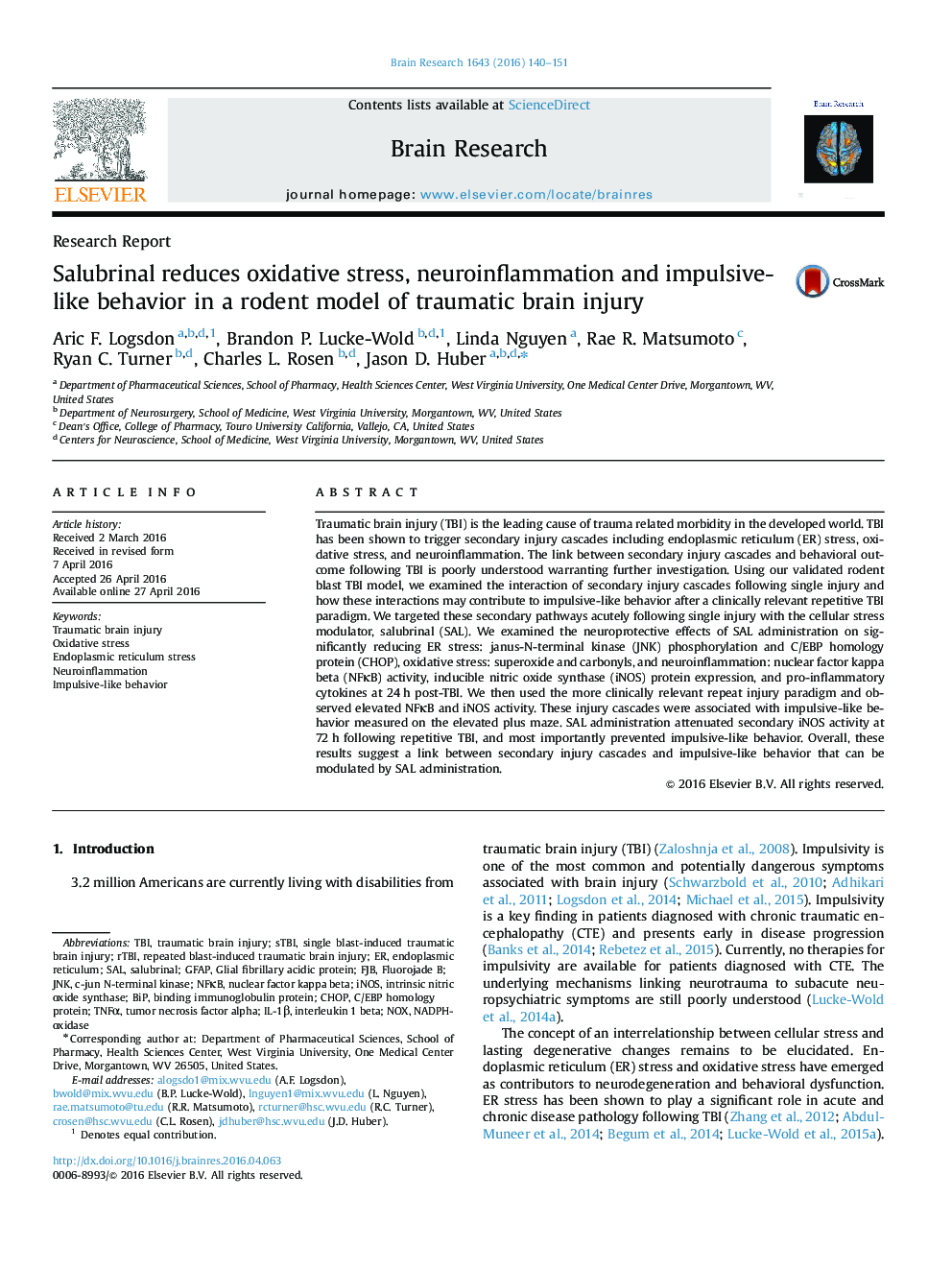| کد مقاله | کد نشریه | سال انتشار | مقاله انگلیسی | نسخه تمام متن |
|---|---|---|---|---|
| 4323535 | 1613799 | 2016 | 12 صفحه PDF | دانلود رایگان |
• Blast injury induces secondary injury cascades and behavioral deficits.
• Endoplasmic reticulum stress and oxidative stress are associated with neuroinflammation.
• Secondary injury cascades are linked to neurobehavioral dysfunction after blast injury.
• Salubrinal targets secondary injury cascades to ameliorate neurodegenerative phenotype.
• Salubrinal prevents impulsive-like behavior following repetitive blast injury.
Traumatic brain injury (TBI) is the leading cause of trauma related morbidity in the developed world. TBI has been shown to trigger secondary injury cascades including endoplasmic reticulum (ER) stress, oxidative stress, and neuroinflammation. The link between secondary injury cascades and behavioral outcome following TBI is poorly understood warranting further investigation. Using our validated rodent blast TBI model, we examined the interaction of secondary injury cascades following single injury and how these interactions may contribute to impulsive-like behavior after a clinically relevant repetitive TBI paradigm. We targeted these secondary pathways acutely following single injury with the cellular stress modulator, salubrinal (SAL). We examined the neuroprotective effects of SAL administration on significantly reducing ER stress: janus-N-terminal kinase (JNK) phosphorylation and C/EBP homology protein (CHOP), oxidative stress: superoxide and carbonyls, and neuroinflammation: nuclear factor kappa beta (NFκB) activity, inducible nitric oxide synthase (iNOS) protein expression, and pro-inflammatory cytokines at 24 h post-TBI. We then used the more clinically relevant repeat injury paradigm and observed elevated NFκB and iNOS activity. These injury cascades were associated with impulsive-like behavior measured on the elevated plus maze. SAL administration attenuated secondary iNOS activity at 72 h following repetitive TBI, and most importantly prevented impulsive-like behavior. Overall, these results suggest a link between secondary injury cascades and impulsive-like behavior that can be modulated by SAL administration.
Journal: Brain Research - Volume 1643, 15 July 2016, Pages 140–151
